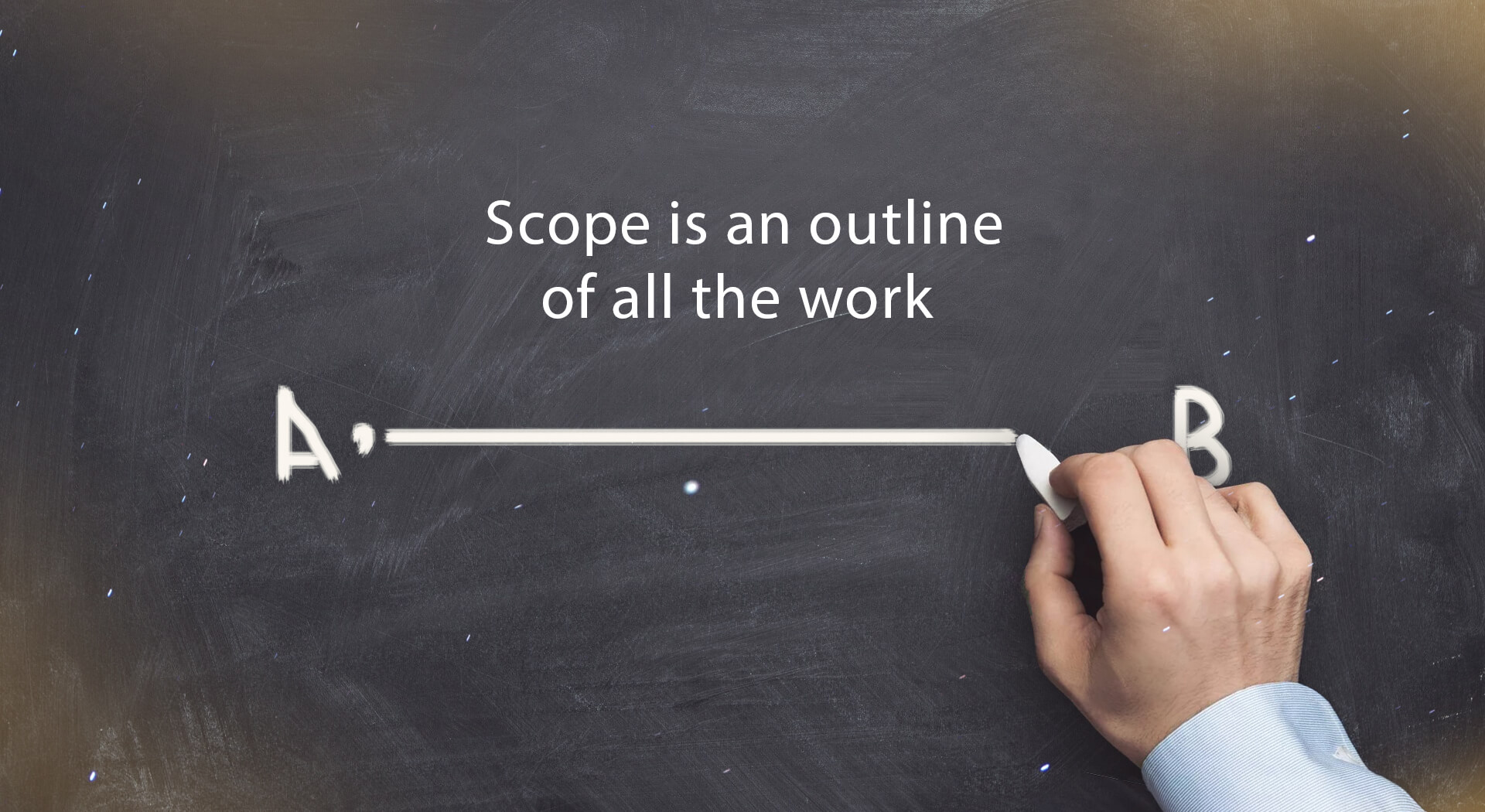For managers of enterprise-scale software products, scope creep represents a chronic risk — especially when trying to go from a napkin sketch to a working piece of software or mobile application.
In any software or mobile app development project, it’s crucial to have a clearly defined scope of work (SOW), or you run the risk of wasting expensive development dollars, slowing down the build, and stalling your own revenue model. So let’s do a quick dive into scope and explore how you can avoid making costly mistakes.
What Is Project Scope?
No, it’s not a mouthwash.
Project scope is a clearly defined SOW. All an SOW consists of, quite frankly, is an outline of all the work that needs to be done to get you from Point A to Point B. When you approach a software developer — any software developer (not just yours truly) — you’ll be presented with an SOW in one form or another. This is a clarification of what work is to be done, without getting into the nitty gritty details of how it will be done.

Here’s the Catch: Uncertainty and Project Scope Creep
Whenever you’re dealing with software or mobile app development, you’re forced to manage uncertainty. An SOW does not always take this level of uncertainty into account. Instead, your SOW is merely a “to do” list.
It doesn’t concern itself with how these tasks will be accomplished, or what obstacles will need to be overcome. Your SOW doesn’t account for negative user feedback or an unsustainable market. It certainly doesn’t factor in pivots, changes, or new information. And that’s exactly why an SOW is so easily disrupted, causing expensive scope creep to take place.
Now, you may be thinking, “I’ll avoid this trouble by creating an iron-clad SOW — something with deadlines, prices, and business targets.” But that will not eliminate the uncertainty. Instead, it may only cause more.

For instance, let’s say your mobile app development project needs a piece of software of a certain scope to be ready by Christmas, and you have a budget of $100K. However, early estimates reveal that, with the current scope, your project cannot be completed before April. What do you do?
You can’t change the estimate — that’s the reality. What can you change, then? The scope of the software project. In other words, if you need it by Christmas, you’ll need to change what you’re building entirely. And as a result, you’ll need a new SOW.
It’s only through this dance between reality and ideas that we can successfully manage uncertainty throughout the product life cycle. More importantly, even a perfect SOW cannot survive a changing business goal defined by reality. And you’ll find that, more often than not, the “how” defines the “what.” That’s why good development partnerships are essential: so you know what’s possible and at what cost.
How to Manage Project Scope Creep
Is there anything I can do to avoid scope creep, even in the face of uncertainty? Of course!
However, we’re going to argue that it’s not scope you should monitor — it’s how you prioritize your software or mobile app development efforts from start to finish. For instance:
-
If you’re looking to cut waste, try a lean approach that prioritizes an MVP (minimum viable product), or the minimum set of features or capabilities you’ll need to build before you can start testing the market.
-
If you want speed, prioritize the schedule, creating hard deadlines for specific features or tests.
- If you want to maintain a tight budget, prioritize your development efforts around that.
Essentially, it can be boiled down to the following: You have three buckets — scope, budget, and schedule — and you can only control two. Which do you choose?
Do you have a complex mobile app that will require a ton of resources? Then it’s probably going to take more time than you think. Need to stick to a tight budget and a short timeframe? Then the scope of your project needs to be reasonable.
You get the idea. Accordingly, by prioritizing the most important facets of your product development efforts, you can effectively trim the fat off of your project.
What Else Can I Do?
Other ways to effectively manage scope revolve around open communication, short sprints, and defined milestones. This means that you should establish attainable goals early and often, set clear expectations for everyone involved in the project, and maintain open channels of communication, no matter how trivial a conversation or update might seem.
In addition, you can set benchmarks, establish boundaries, and focus on small battles while trying to win the larger war ahead. All of this stems from proper prioritization. Ask yourself, “What is truly essential?”
How Can Distillery Help?
Distillery is global team of more than 200 professionals with extensive product development experience. We maintain a laser focus on reducing our priorities to what’s absolutely essential. We don’t want to waste our clients’ time any more than we want to waste our own. That’s why we help our clients determine what is essential to their idea, and then distill that down even further until we uncover the most important priorities at play.
We understand both time and budgetary constraints, as well as the activities that threaten them. That’s why we’re dedicated to the 20/80 rule, which means that 20% of an effort should produce 80% of its value. If it can’t pass that test, there’s waste in your development process. And by ridding your process of that waste, you can increase the speed of product development (while decreasing the cost!), and start to generate revenue faster.
Don’t believe us? Reach out! We’ll be happy to answer whatever questions you may have.

